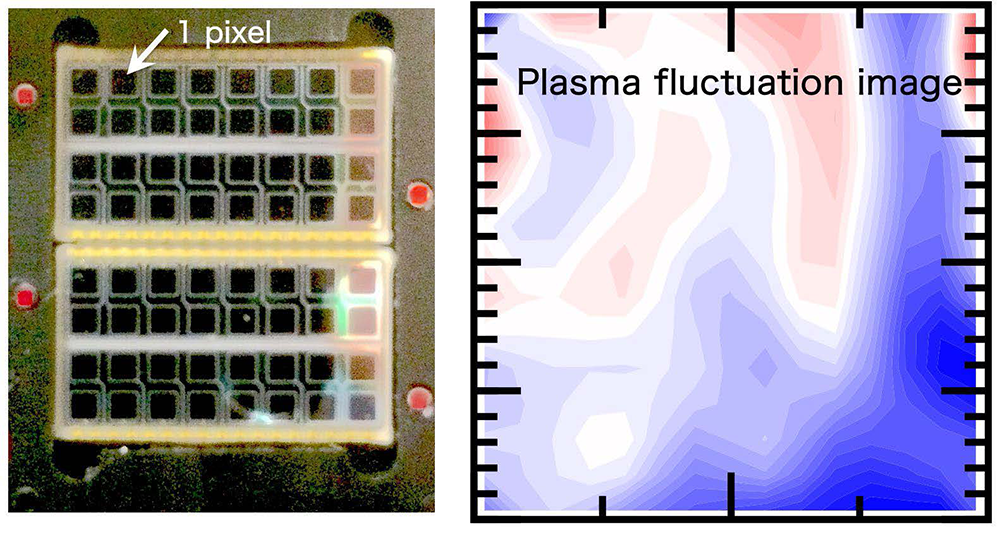Plasma fluctuation captured by 64 pixel and one million frame rates detector
In the Large Helical Device (LHD), a plasma fluctuation measurement system has been developed using an ultra-fast detector. Light emission from the plasma was measured by an 8x8 two-dimensional detector array, having one million frame rates. By using this system, a fast measurement of plasma density fluctuation was successfully performed.
 |
Plasma turbulent transport is regarded as one of most difficult problems to be solved for fusion development. Plasma turbulence is a cluster of micro eddies embedded in a confined plasma body. Plasma turbulence is known to enhance outward directed heat flow. Therefore, in order to increase the plasma temperature at its center, it is necessary to reduce the effect of the turbulence. As a first step, different kinds of plasma turbulence diagnostics were proposed and conducted. In order to capture the characteristics of the turbulence eddies having ultra-short lifetimes, a camera system with one million frame rates was developed in the LHD. This camera system has only 64 pixels. By reducing their number, the frame rates could be increased.
By operating this diagnostic system, plasma density fluctuation measurement was performed. The figure at the right is a plasma fluctuation image at a certain time instance. The red and blue parts correspond to high- and low-density plasmas. This pattern changes in time. By installing this system, information from the plasma interior could be obtained.
This study was accomplished based on a collaboration with Drs.M. Yoshinuma and K. Ida.
The paper was published on October 28, 2020 in Plasma Physics and Controlled Fusion, an international journal on plasma physics.
